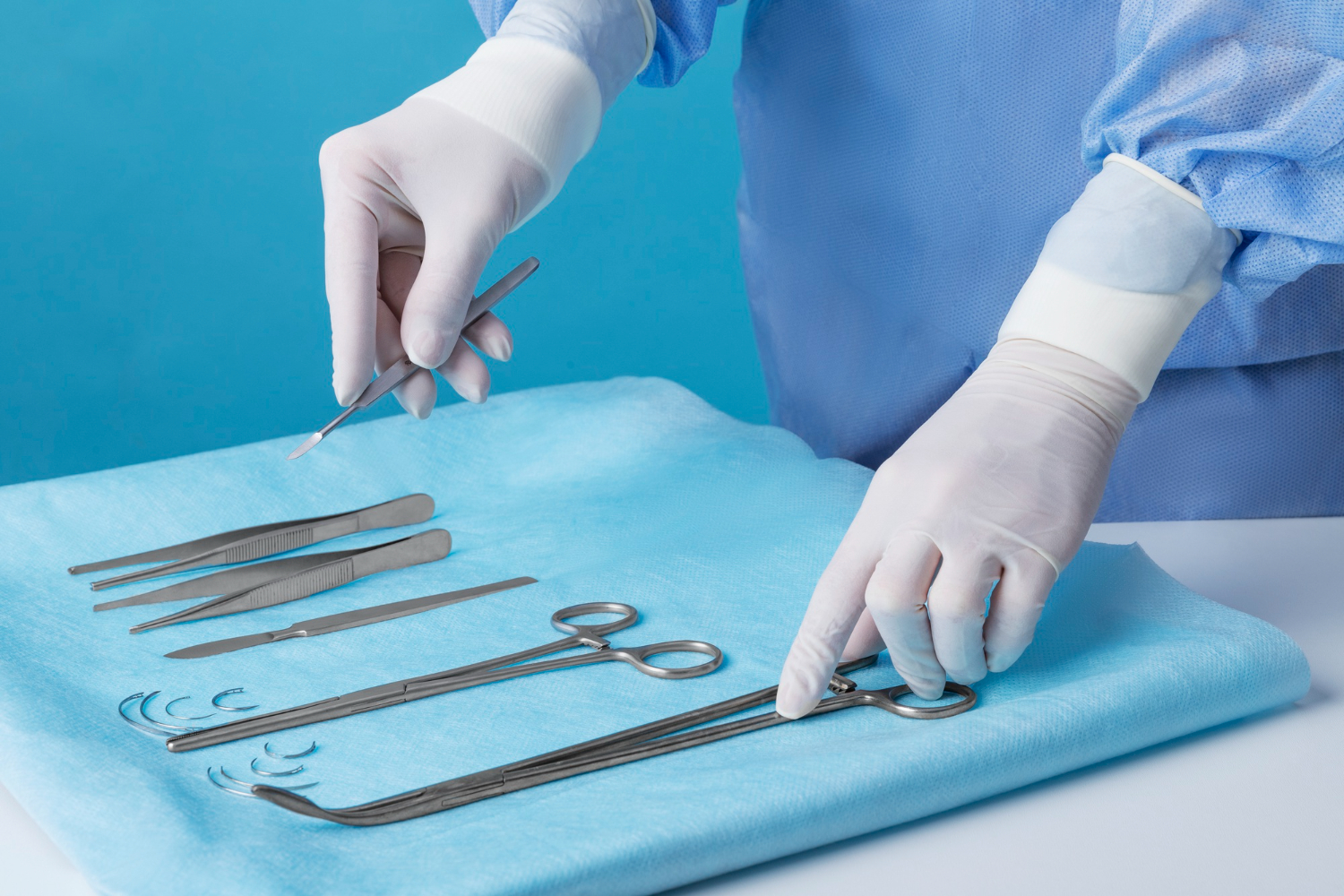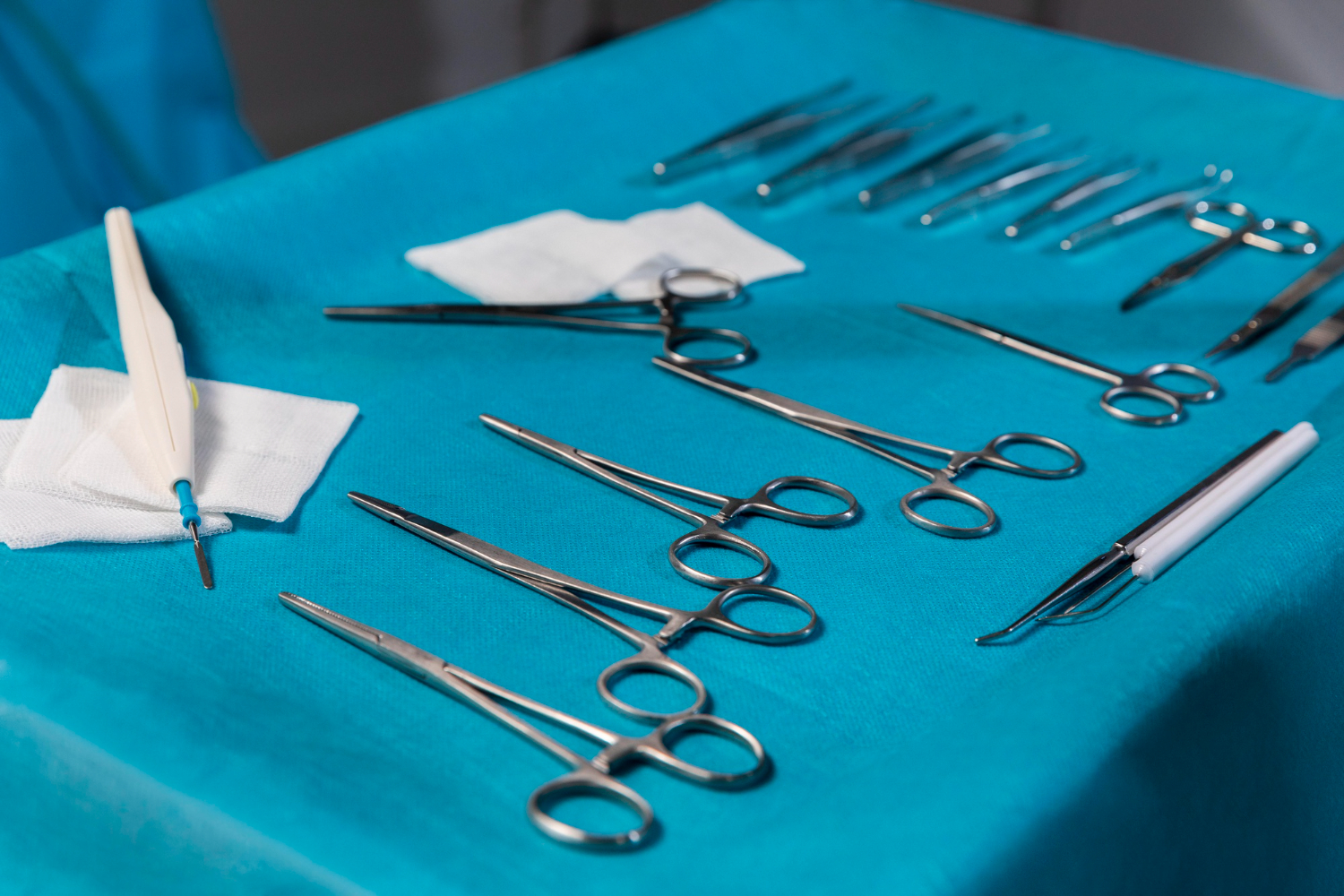Surgical Forceps Types and Their Wide Range of Uses
Surgical forceps are essential tools for medical professionals. They are used for everything from simple grasping to more complex tasks, and there are many types designed for different surgical needs.
For example, Adson forceps have delicate tips and fine-toothed jaws, making them great for fine suturing and handling delicate tissues. Dressing forceps are built to hold dressings and bandages securely during wound care. Mosquito forceps have small, straight jaws that are perfect for stopping bleeding in delicate procedures.
Other types include Allis forceps, which are used for grasping tissue, and Kelly forceps, which have serrated jaws for a stronger grip. Each type of forceps has its own design and purpose, making them vital tools in various surgeries.
In this article, we’ll look at the different types of surgical forceps and their specific uses, providing a helpful guide for both medical professionals and interested readers.
Different Types of Surgical Forceps
Surgical forceps come in a variety of types, each designed for specific purposes in surgical procedures. Understanding the different categories is crucial for any medical professional. One of the most recognizable types is the Adson forceps. These are characterized by their fine, delicate tips, perfect for grasping and manipulating delicate tissues. The Adson forceps often feature a slight curve, which allows for better access during suturing or tissue dissection. Their serrated jaws provide a secure grip without causing excessive trauma to the tissue, making them a go-to choice for surgeons focusing on intricate work.
Another common type is the Kelly forceps, which are known for their wider, serrated jaws. These are particularly effective for clamping larger blood vessels and tissues during surgeries. The design allows for a strong grip, ensuring that the tissue remains securely held during critical moments. The Kelly forceps are often used in general surgery, as their robust design can withstand the demands of various procedures, from abdominal surgeries to orthopedic interventions.
Dressing forceps serve a different purpose. They are specifically designed to handle dressings and other materials during wound care. With their broader tips and smooth gripping surfaces, dressing forceps allow for easy and secure manipulation of bandages without the risk of tearing or damaging them. This type of forceps is essential in both surgical settings and postoperative care, ensuring that dressings are applied correctly to promote healing.

Anatomy of Surgical Forceps
Understanding the anatomy of surgical forceps is vital for selecting and using them effectively. Most forceps have a few common components including jaws, a handle and a box lock. The jaws are the part that grasps the tissue and their design can vary significantly depending on the type of forceps. Some jaws are serrated while others are smooth or have specialized tips. such as those found on Adson or dressing forceps. The shape and size of the jaws also play a critical role in their functionality with some designed for precision and others for strength.
Moving on to the handle, it is typically designed for ease of grip and maneuverability. The ergonomic design of the handle is crucial especially during lengthy procedures, as it minimizes hand fatigue. Some forceps come with a ratchet mechanism allowing the surgeon to lock the jaws in place, which is particularly useful when continuous pressure is needed. This feature ensures that the forceps can hold tissue with minimal effort from the surgeon freeing up their hands for other tasks.
Finally, the box lock is an essential component that connects the jaws and the handle. It allows for a controlled opening and closing motion which is vital for delicate procedures. In high-quality surgical forceps the box lock is designed to be durable and reliable ensuring that the forceps maintain their integrity over time. Understanding these components will not only help in choosing the right instrument but will also enhance its effective use during surgeries.
Uses of Surgical Forceps in General Surgery
In general surgery, the versatility of surgical forceps is showcased in various applications. One of the primary uses is for hemostasis which is the process of stopping bleeding. Forceps like the Kelly and Mosquito types are instrumental in clamping blood vessels during procedures. This capability allows surgeons to manage blood loss effectively which is crucial for maintaining visibility and ensuring patient safety during surgery. The ability to secure blood vessels with forceps minimizes the need for cauterization which can lead to thermal damage to surrounding tissues.
Another common application is tissue manipulation. Forceps such as the Adson type are frequently employed in procedures requiring delicate dissection or suturing. Their fine tips allow surgeons to grasp small pieces of tissue without causing undue trauma which is particularly important in surgeries involving sensitive areas like the abdomen or thoracic cavity. The precision offered by these forceps aids in achieving better surgical outcomes as it allows for meticulous handling of delicate tissues.
In addition to hemostasis and manipulation dressing forceps play a vital role in postoperative care. After a surgical procedure medical professionals use these forceps to apply dressings securely over incisions. Their design ensures that the dressing is applied without contact from fingers reducing the risk of infection. This aspect is particularly important in maintaining sterile conditions and promoting optimal healing highlighting the essential role of surgical forceps in the continuum of surgical care.

Specialized Uses of Surgical Forceps in Different Medical Specialties
Surgical forceps are not just limited to general surgery they have specialized applications across various medical fields. In gynecology for instance forceps are often used during childbirth. Obstetrical forceps are specifically designed to assist in delivering the baby safely when complications arise. These forceps have a unique shape that allows for precise placement around the baby's head. facilitating a controlled delivery while minimizing trauma to both the mother and child.
In orthopedics, forceps play a crucial role in handling bone fragments and soft tissues during surgical procedures. Bone forceps which are designed for gripping and manipulating bone, often feature robust jaws that are capable of withstanding the forces involved in orthopedic surgeries. Additionally specialized forceps such as bone-holding clamps are utilized to stabilize fractures during fixation, ensuring that the bones are correctly aligned as they heal.
Ophthalmology also benefits from the precision of surgical forceps. In this specialty, specific types of forceps are used for delicate eye surgeries such as cataract removal or retinal procedures. The fine-tipped forceps designed for ophthalmic use allow surgeons to manipulate very small structures within the eye & providing the necessary control required for successful outcomes. These specialized forceps highlight the adaptability of surgical tools to meet the diverse needs of various medical specialties.
Tips for Selecting the Right Surgical Forceps
Choosing the right surgical forceps is crucial for the success of any procedure. First and foremost, consider the type of procedure being performed. Different surgeries require specific forceps designed for the task at hand. For instance, while performing delicate suturing Adson forceps are a better choice due to their precision and fine grip. Conversely during more robust surgeries such as those involving larger tissues Kelly forceps would be more appropriate due to their strength and serrated jaws.
Another critical factor is the material of the forceps. Surgical forceps are typically made from stainless steel which offers durability and resistance to corrosion. However, the selection may also depend on the specific requirements of the surgery. For instance, disposable forceps made from plastic might be favored in certain settings for their convenience and sterility. Always ensure that the material aligns with the intended use as this can significantly affect performance.
Lastly, ergonomics should not be overlooked. Forceps designed with a comfortable grip can reduce hand fatigue during lengthy procedures. Look for instruments that feature an ergonomic handle and consider the weight of the forceps as well. A well-balanced tool will allow for better control and precision enhancing the surgeons ability to perform intricate tasks efficiently. Careful evaluation of these factors will lead to better surgical outcomes and overall satisfaction.
